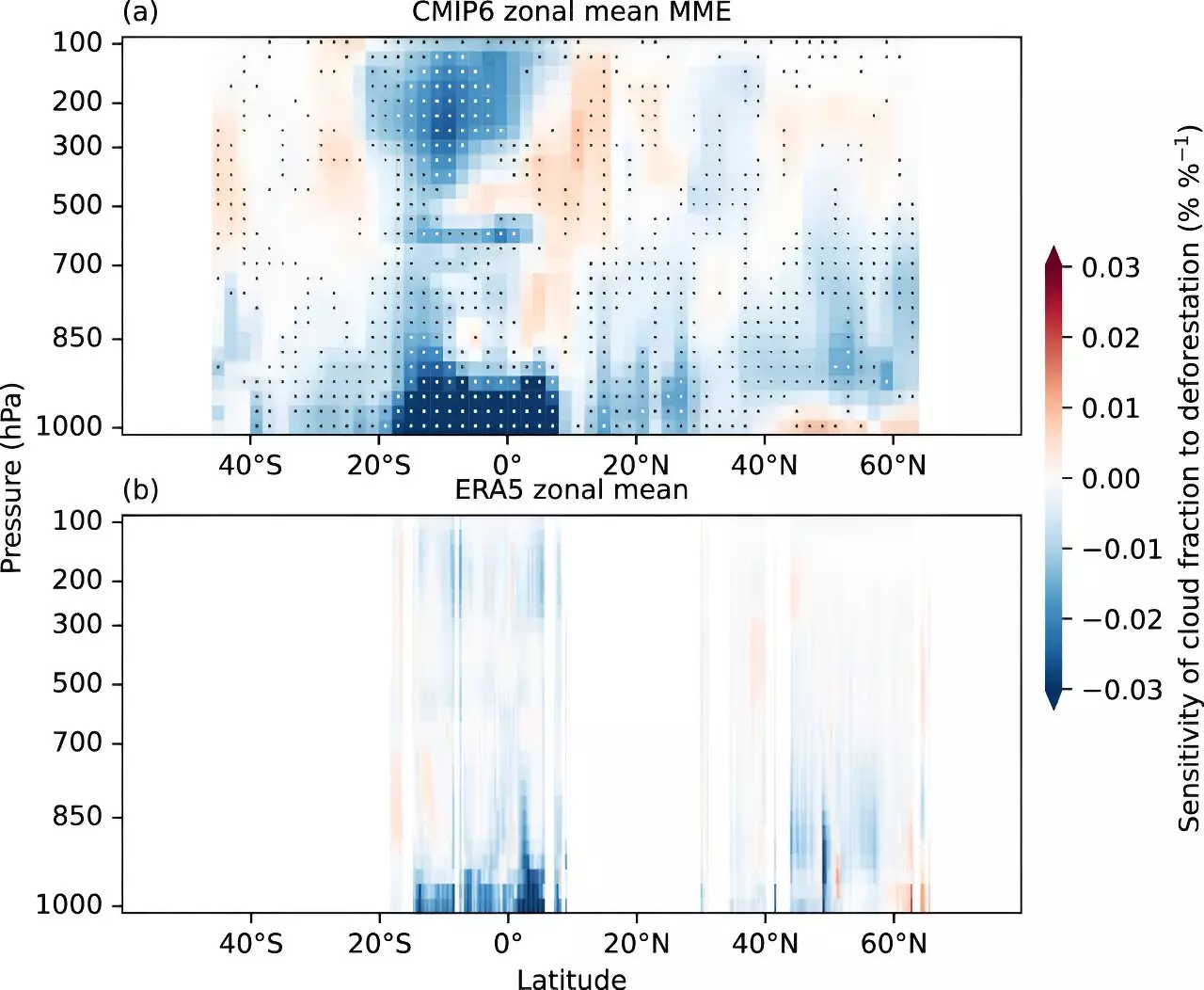Deforestation, often viewed solely through the lens of carbon emissions, carries nuanced implications for our planet’s climate system. Recent collaborative research efforts involving institutions such as iDiv, Leipzig University, and Sun Yat-sen University have cast a new light on this topic, revealing that the climatic consequences of large-scale deforestation are more profound than previously acknowledged. This study not only highlights the release of carbon dioxide as a significant factor but also raises critical concerns regarding cloud cover in deforested areas.
The findings show that when forests are cleared, the warming effect extends beyond mere carbon emissions. Interestingly, forests, being darker than cleared land, should theoretically exert a cooling influence by absorbing less sunlight. However, this mitigating effect is significantly compromised when cloud cover diminishes in deforested regions. The study’s simulations reveal that alterations in cloud patterns could nearly halve the cooling benefit expected from these darker surfaces. This duality of deforestation revealing both warming and cooling effects complicates our understanding of its environmental footprint.
Dr. Hao Luo, the lead author, elaborated on the implications of their findings, stating that the reduction of both low-level and high-level clouds in deforested areas plays a crucial role in climate dynamics. Low-level clouds, in particular, serve to reflect sunlight away from the Earth, thereby cooling the atmosphere. This crucial function is disrupted in the absence of forests, leading to increased warming that has not been sufficiently emphasized in prior research.
The team’s approach utilized a combination of climate models and observational data, facilitating a robust analysis of how surface heat fluxes are altered post-deforestation. Professor Johannes Quaas further explained this phenomenon, noting that the reduction in the natural uplift and moisture patterns leads to fewer clouds being formed, creating a feedback loop that exacerbates climate warming.
Despite these revelations, the interaction between meteorological processes in forested and deforested areas remains an underexplored domain within climate science. The study underscores the necessity for further research into how forest biodiversity influences cloud formation. This connection could provide pivotal insights into mitigating climate impacts, presenting new avenues for enhancing forest conservation strategies.
As scientists and policymakers grapple with the pressing challenges of climate change, this research elucidates the multifaceted nature of deforestation’s influence. It encourages a shift in focus to include not just carbon emissions but also the role of cloud dynamics in climate models.
The implications of this study extend far beyond academic discourse. With the climate crisis intensifying, understanding the comprehensive effects of deforestation—including its profound influence on cloud cover and, consequently, the Earth’s climate—is essential for developing effective conservation and climate adaptation strategies. This new evidence should serve as a catalyst for revisiting policies directed towards forest management, ensuring they consider the intricate interdependencies that exist within our ecological systems.

